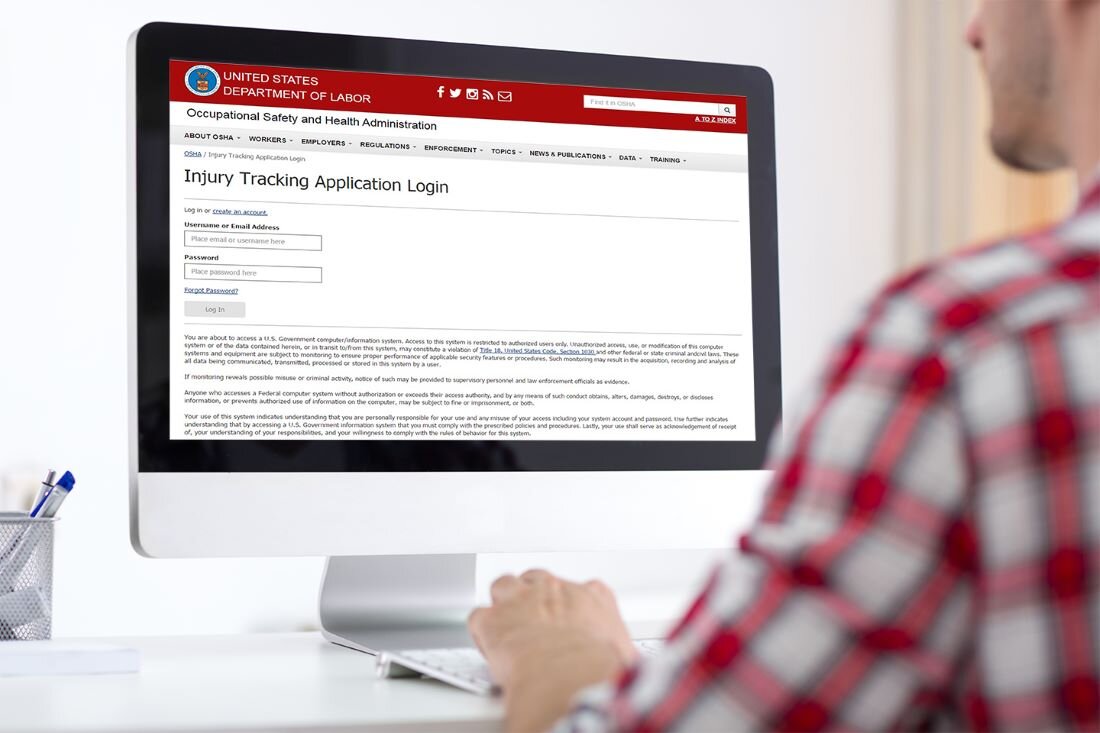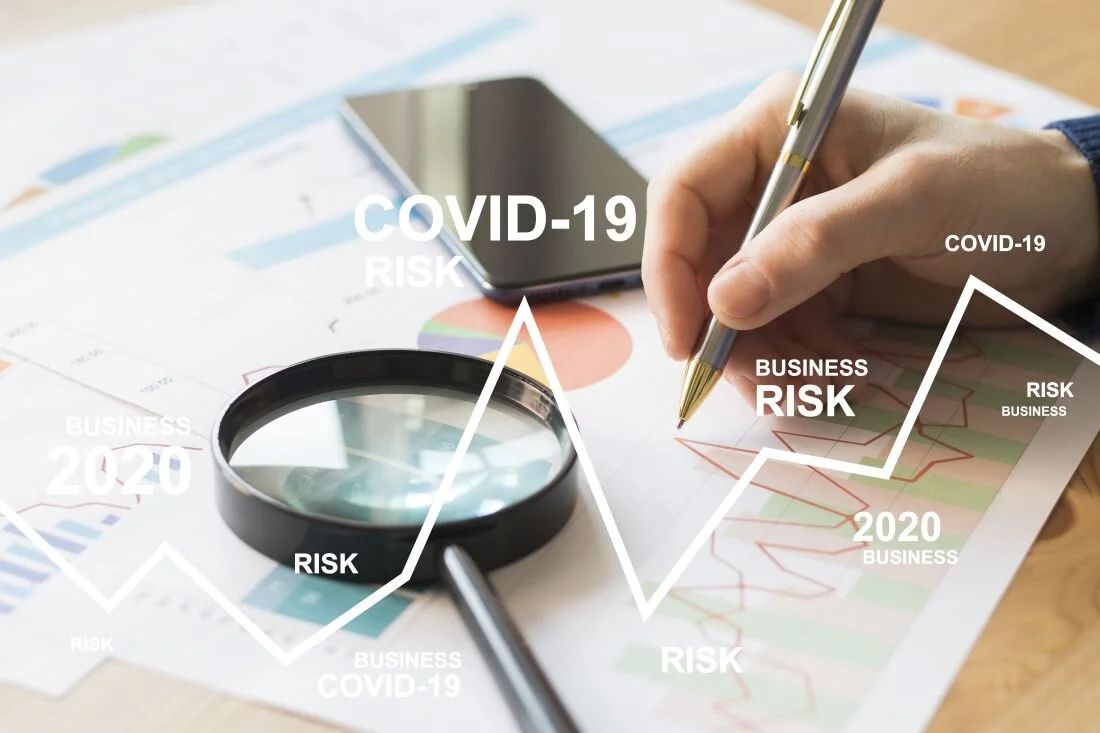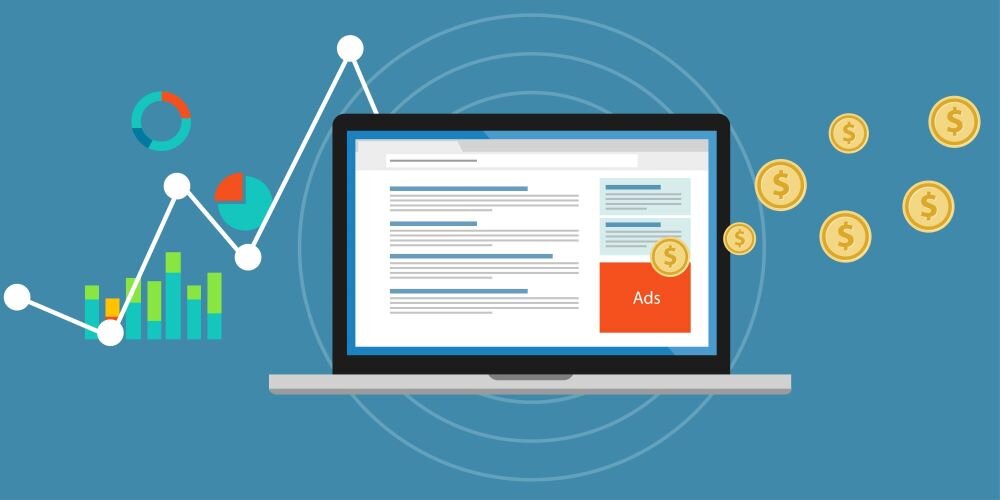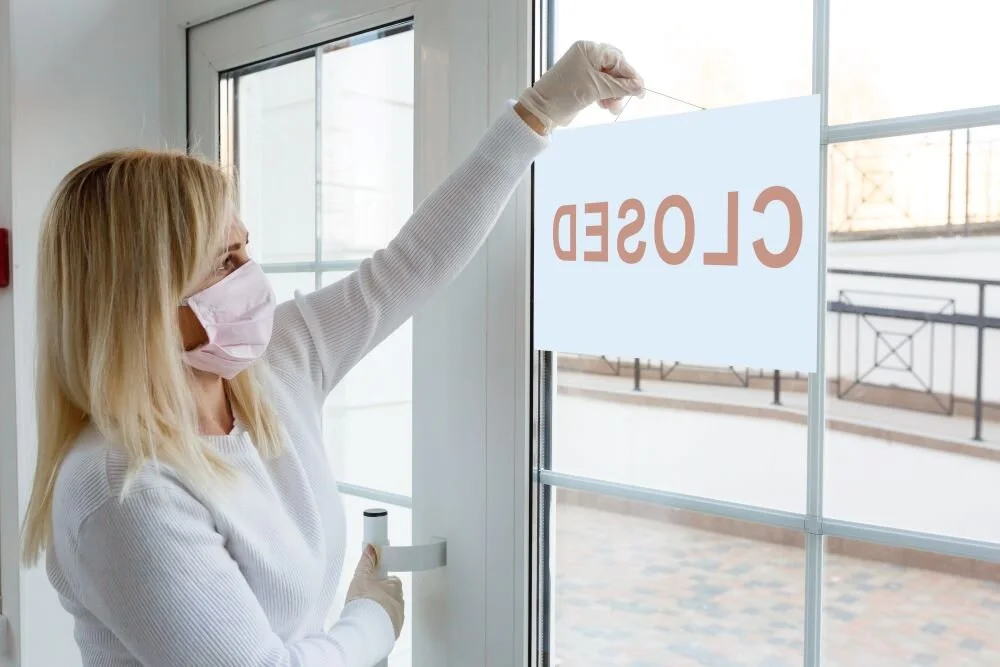
Industry News

Workers’ Compensation Claim Advocacy: Distinguishing Good from Great
Author, Jim Malone, Workers’ Compensation Claims Advocate, Rancho Mesa Insurance Services, Inc.
As the new normal continues evolving through this pandemic, advocates are needed across all industries and sectors. Businesses and their employees exposed to the risk of workers’ compensation injuries and illnesses need the highest level of advocacy now, more than ever.
Author, Jim Malone, Workers’ Compensation Claims Advocate, Rancho Mesa Insurance Services, Inc.
As the new normal continues evolving through this pandemic, advocates are needed across all industries and sectors. Businesses and their employees exposed to the risk of workers’ compensation injuries and illnesses need the highest level of advocacy now, more than ever.
Like so much of what we experience in our daily interactions, establishing a baseline of competence in any field has varying levels of effectiveness. That is, there are good claim advocates and then there are great ones; high-level claim liaisons that can make organizations more knowledgeable and stronger.
What are the characteristics that make up the great ones? And, what should you expect with their involvement in your workers’ compensation program?
The first pre-requisite for any workers’ compensation claim advocate is experience. Ideally, having multiple years working as a claim adjuster and managing a case load for an insurance company is vital. While this creates a solid base, stopping here can limit the effectiveness for employers in other critical areas. In order to begin to go from good to great you should expect your advocate to have one or more of the following experiences to offer the broadest perspective possible for your team:
Background with return-to-work programs, in development, implementation and management.
Experience from being a workers’ compensation administrator for a self-insured employer with the State of California and Department of Industrial Relations
Obtaining years of training in diagnosing and treating industrial injuries from occupational medicine, orthopedic surgical, spinal surgical and pain management physicians.
Providing years of training to workers compensation physicians on treatment and disability management of work injuries and preparing med-legal reports and addressing permanent impairment ratings, causation, apportionment, contribution and all other issues.
Or the very rare experience of suffering a work injury, requiring surgeries and rehab, concern for losing one career and starting over in another, and going through the entire workers compensation process through settlement
Secondly, using these technical experiences in review and oversight of claims is both tangible and measurable. That includes:
Ensuring the accuracy of claim statuses and plan of actions.
Recognizing when claim reserves are adequate or inflated.
Pushing for claim closures in the most efficient and cost-effective resolutions.
Forming a deep, consultative bond that elevates a claim advocate to that of a trusted partner.
The final component in establishing a superior workers’ compensation advocate is building strong, respectful relationships with adjusters and employers. This requires the most experienced advocate creating a “partnership environment” that allows for continual open dialogue, which very often expedites the entire claim process. The most effective of these professionals build this environment through direct communication with the adjuster(s), supervisors, and even claim department managers. That information is then thoroughly and simply shared with employers in regular intervals through formal claim reviews, safety committee meetings, and/or pre-renewal meetings involving the broker.
As a 35-year industry veteran of the claims management field, I proudly serve the Rancho Mesa team with a core commitment to providing great contributions to the claims management process. These contributions are predicated on bringing my extensive knowledge and experiences from all sides of the workers’ compensation claim process, to my advocacy role for you, my client… the employer.
OSHA Recording Requirements for COVID-19 Cases
Author, Alyssa Burley, Media Communications and Client Services Manager, Rancho Mesa Insurance Services, Inc.
As businesses begin to reopen across the country, employers are now faced with the real possibility that one or more of their employees may be diagnosed with COVID-19. Those who are familiar with the U.S. Department of Labor’s Occupational Safety and Health Administration (OSHA) recording requirements may be wondering how to handle an employee COVID-19 case on their OSHA logs.
Author, Alyssa Burley, Media Communications and Client Services Manager, Rancho Mesa Insurance Services, Inc.
As businesses begin to reopen across the country, employers are now faced with the real possibility that one or more of their employees may be diagnosed with COVID-19. Those who are familiar with the U.S. Department of Labor’s Occupational Safety and Health Administration (OSHA) recording requirements may be wondering how to handle an employee COVID-19 case on their OSHA logs.
California’s Division of Occupational Safety and Health (better known as Cal/OSHA) has released information for employers on the subject and it appears they are using their existing criteria for determining the recordability of an employee COVID-19 case.
According to Cal/OSHA, “California employers that are required to record work-related fatalities, injuries and illnesses must record a work-related COVID-19 fatality or illness like any other illness.” To be recordable on the 300, 300A and 301 forms, the COVID-19 case must be work-related and result in one of the following:
Death.
Days away from work or transfer to another job.
Medical treatment beyond first aid.
Loss of consciousness.
A significant injury or illness diagnosed by a physician or other licensed health care professional.
The criteria that most employers may have a hard time determining is if the COVID-19 illness is actually work-related. Cal/OSHA addresses this in its Frequently Asked Questions webpage. First, the employer must determine if there was “an event or exposure in the work environment [that] either caused or contributed to” the COVID-19 case.
In order to determine if a case is work-related, employers should consider factors like:
The type and duration of contact the employee had at work with other people including co-workers and the general public.
With the implementation of physical distancing and other controls within the workplace, what is the likelihood of exposure?
Did the employee come in contact with anyone showing signs and symptoms of COVID-19, while working?
These considerations will help an employer determine whether or not the COVID-19 case is work-related and thus recordable. According to Cal/OSHA, it is best practices to err on the side of recordability when in doubt about how an employee was exposed to COVID-19.
If it is determined that an employee’s illness was work-related, yet, for a variety of reasons testing or the results from a test is unavailable and the employee has been determined to have COVID-19, “an employer must make a recordability determination” as to whether or not to record the case. While a positive COVID-19 test result would trigger recordability by the employer, a positive test is not always necessary to record the case in the OSHA logs.
Keep in mind, the above information is for OSHA recording of work-related COVID-19 cases only, which may be different from guidance for workers’ compensation claims.
Cal/OSHA states that “Governor Newsom’s Executive Order N-62-20 addresses eligibility for workers’ compensation benefits... The Order does not alter employers’ reporting and recording obligations under Cal/OSHA regulations.”
Rancho Mesa’s Risk Management Center offers employers the ability to track their COVID-19 cases electronically and generate the applicable OSHA 300, 300A and 301 forms along with an incident report and First Report of Jury (Form 5020).
To learn more about the Risk Management Center, contact our Clients Services Department at (619) 438-6869.
Commissioner Lara Approves WCIRB Proposed Amendments Addressing COVID-19
Author, Dave Garcia, President, Rancho Mesa Insurance Services, Inc.
California Insurance Commissioner Lara has approved, as filed, the proposed special regulatory filing submitted by the Workers’ Compensation Insurance Rating Bureau (WCIRB) concerning proposed amendments addressing the Coronavirus Disease (COVID-19). The special regulatory filing is effective July 1, 2020 and will apply retroactively starting March 19, 2020, the day California Governor Newsom issued the Stay-at-Home Executive Order N-33-20. Those amendments are as follow…
Author, Dave Garcia, President, Rancho Mesa Insurance Services, Inc.
California Insurance Commissioner Lara has approved, as filed, the proposed special regulatory filing submitted by the Workers’ Compensation Insurance Rating Bureau (WCIRB) concerning proposed amendments addressing the Coronavirus Disease (COVID-19). The special regulatory filing is effective July 1, 2020 and will apply retroactively starting March 19, 2020, the day California Governor Newsom issued the Stay-at-Home Executive Order N-33-20. Those amendments are as follows:
New COVID-19 Rule: Clerical Office Employees
Part 3, Section III, General Classification Procedures, was amended to add Rule 7, Coronavirus Disease 2019 (COVID-19), to permit during a statewide California COVID-19 stay-at-home order the following: The division of an employee’s payroll between Classification 8810, Clerical Office Employees, and a non-standard exception classification when the employee’s work is exclusively clerical in nature and the non-standard exception classification does not include Clerical Office Employees. This amendment will conclude 60 days after the Stay-at-Home Executive Order N-33-20 is lifted.
New COVID-19 Rule: Basis of Payroll
Part 4, Section IV, Exposure Information, Rule 1, Classification Code, and Rule 4, Exposure Amount, were amended to report payments excluded from remuneration pursuant to new Rule 7, Coronavirus Disease 2019 (COVID-19). Payments made to an employee while the employee is performing no duties of any kind in service of the employer are to be excluded from payroll when the payments are equal to or less than the employee’s regular rate of pay. This amendment will conclude 30 days after the Stay-at-Home Executive Order N-33-20 is lifted.
New COVID-19 Rules: Claims Reporting
Part 4, Section V, Loss Information, Rule B, Loss Data Elements, Sub rule 4, Catastrophe Number, was amended to add Catastrophe Number 12 for the reporting of COVID-19 claims. Appendix III, Injury Description Codes, Section B, Nature of Injury (Positions 3-4), and Section C, Cause of Injury (Positions 5-6), were amended to add a Nature of Injury code and a Cause of Injury code for COVID-19 claims. This amendment includes claims with an accident date after December 1, 2019, reported on a Unit Statistical Report due on or after August 1, 2020, and reported with a Catastrophe Number 12.
Exclusion of COVID-19 Claims from Experience Modification
Section VI, Rating Procedure, Rule 2, Actual Losses and Actual Primary (Ap) Losses, was amended to specify that all claims directly arising from a diagnosis of Coronavirus Disease 2019 (COVID-19) shall not be reflected in the computation of an experience modification.
For a greater understanding of these changes and how they will impact your company please contact our team at (619) 937-0164.
Topics Your COVID-19 Training Should Cover
Author, Lauren Stumpf, Media Communications Coordinator, Rancho Mesa Insurance Services, Inc.
As states begin to lift COVID-19 restrictions and move into later phases of reopening plans, and companies begin to bring back their employees, it is important to take the necessary health and safety precautions in the workplace. Your staff should be well informed about safety precautions and resources to keep one another safe. When choosing a COVID-19 employee training, make sure it is comprehensive and includes all the necessary topics recommended by local, state and federal agencies.
Author, Lauren Stumpf, Media Communications Coordinator, Rancho Mesa Insurance Services, Inc.
As states begin to lift COVID-19 restrictions and move into later phases of reopening plans, and companies begin to bring back their employees, it is important to take the necessary health and safety precautions in the workplace. Your staff should be well informed about safety precautions and resources to keep one another safe. When choosing a COVID-19 employee training, make sure it is comprehensive and includes all the necessary topics recommended by local, state and federal agencies.
The Risk Management Center offers a 10-15 minute training designed to ensure compliance with COVID-19 safety guidelines. This general awareness course on COVID-19 covers tips on how to reduce the risk of contracting the virus by using best practices. In addition, the course covers COVID-19 characteristics and related health and safety concerns.
The COVID-19 General Awareness Online Training topics include:
COVID-19 Characteristics
CDC-Recommended Basic Precautions
Tips for Limiting Exposure
Proper Hand Washing
Social Distancing
Personal Protective Equipment (PPE)
Cross Contamination
Employer Responsibilities
Employee Temperature Checks
Face Masks
Importance of proper disinfecting and sanitation
Recommended Chemicals
What to Clean and Disinfect
Working-from-Home Ergonomics
Federal Assistance for COVID-19 Related Leave
Families First Coronavirus Response Act (FFCRA)
Paid Sick Leave
Family and Medical Leave Act (FMLA)
This online training is offered for free to Rancho Mesa clients. Contact the Client Services department at (619) 438-6869 to learn more about the COVID-19 General Awareness training.
For up-to-date COVID-19 information and HR resources please visit Rancho Mesa’s COVID-19 Information Page.
Nonprofits Eligible for Free Digital Advertising
Author, Sam Brown, Vice President, Human Services, Rancho Mesa Insurance Services, Inc.
To help avoid a decrease in private donations due to the Coronavirus pandemic, nonprofit leaders have turned their attention to a powerful tool used to increase website traffic and online donations: Google’s Ad Grant Program.
Author, Sam Brown, Vice President, Human Services, Rancho Mesa Insurance Services, Inc.
According to the Blackbaud Institute, charitable giving creeped up by only 1% in 2019… But online giving increased 6.8% last year and increased 10% over the last three years! To help avoid a decrease in private donations due to the Coronavirus pandemic, nonprofit leaders have turned their attention to a powerful tool used to increase website traffic and online donations: Google’s Ad Grant Program.
Consider how many organizations spend thousands of dollars each month on Google Ads to gain website traffic, market share, and online customers.
Now consider that Google Ad Grants provide up to $10,000 per month (maximum of $329/day) of free advertising on Google search result pages to eligible nonprofit organizations. The result: high-quality, converting traffic.
Marketing consultant Reese Harris, founder of Ree-Source, Inc, adds “Whether you are driving donations, increasing brand awareness, or amplifying engagement, the Google Ad Grant Program is essential for any nonprofit organization. We encourage all nonprofits to include this strategy in their marketing and outreach.”
To make this a successful strategy, most nonprofits should make use of Geo-Targeting. In other words, your ads should only show to searchers in locations that are important to your organization.
It’s also important to track and measure the results of your campaign. That’s the beauty…this is the internet, not a billboard! Google will provide you with a behind the scenes pass to view exactly which of your keywords attract converting traffic and which keywords aren’t working.
Google Ad Grants is an amazing tool nonprofit leaders can use to increase awareness, web traffic, and engagement. Regardless of your web-marketing experience, the learning and adjusting is an ever-evolving process that promises to deliver. Good luck!
Rancho Mesa understands the importance of every dollar that is raised by nonprofits through advertising efforts, donor relations and fundraisers. That is why we offer the risk management tools your organization needs to minimize costly risks and manage insurance costs, so more of your funds can serve your mission.
Critical Elements of a COVID-19 Safety Plan
Author, Jeremy Hoolihan, Account Executive, Rancho Mesa Insurance Services, Inc.
As businesses re-open across the country, it is important that we all do our part in preventing and slowing the spread of COVID-19. For many companies in construction and those in the service industry, employees often work in close proximity with others. Keeping your workforce and the public safe should be priority number one.
Author, Jeremy Hoolihan, Account Executive, Rancho Mesa Insurance Services, Inc.
As businesses re-open across the country, it is important that we all do our part in preventing and slowing the spread of COVID-19. For many companies in construction and those in the service industry, employees often work in close proximity with others. Keeping your workforce and the public safe should be priority number one.
The Centers for Disease Control and Prevention (CDC) recommends having a written COVID-19 Safety Plan in place. Check with your local city or county for specific Safety Plan (aka Safe Reopening Plan) requirements. A well implemented plan will assist in keeping its employees and the public safe. A Safety Plan should have three critical elements; purpose, responsibilities, and safety procedures. Below is a brief explanation of these three critical elements:
Purpose: A safety plan should provide the purpose for why it is in place.
What is Covid-19? Explain the effects of the virus and how it can spread to others.
Control Measures: Train personnel on ways of minimizing exposure of Covid-19.
Personal Protective Equipment: Maintaining recommended supplies, such as respirators, eye protection, gloves, and hand sanitizer.
Compliance: Making sure your business is in compliance with local, State, and Federal emergency response and health agencies.
Responsibilities: A Safety Plan should also provide specific responsibilities for management and staff, such as:
Training and informing all on safety procedures relating to COVID-19.
Implementing a plan across all personnel.
Monitoring the application of the plan.
Safety Procedures: A Safety Plan should have mandatory procedures in place that all personnel are trained on and are strictly adhered. A few examples include:
Practicing good hygiene.
Stop handshaking, use noncontact methods of greeting.
Guidelines on how to properly disinfect surfaces like doorknobs, tables, desks, and handrails.
Creating a COVID-19 Safety Plan which explains its purpose, the responsibilities of all personnel, and safety procedures will go a long way in minimizing COVID-19 exposure. It will also have a positive effect on employee and public moral as it shows you are doing your part to stop the spread of the virus.
As your business designs a formal COVID-19 Safety Plan, Rancho Mesa can assist you with a plethora of related safety resources available in both English and Spanish. Visit www.ranchomes.com/covid-19 for a list of available resources.
Resources:
COVID-19 Safety Plan/Return-to-Work Plan Resources
San Diego County Safe Reopening Plan Template
Imperial County Sample Agency COVID-19 Response Plan (4.27.20)
Riverside County Safe Reopening Guidelines 05212020
COVID-19’s Impact on the Non-Profit Insurance Marketplace
Author, Chase Hixson, Account Executive, Rancho Mesa Insurance Services, Inc.
Businesses of all sizes across the country have been impacted by COVID-19 in some way or another. As we begin to phase back into the “new normal,” the insurance industry is seeing several changes within the non-profit sector that will significantly impact pricing and coverage, moving forward.
Businesses of all sizes across the country have been impacted by COVID-19 in some way or another. As we begin to phase back into the “new normal,” the insurance industry is seeing several changes within the non-profit sector that will significantly impact pricing and coverage, moving forward.
Rate Increases
With many businesses completely shut down and sales way off projections, insurance companies are experiencing lower annual premiums while still needing to pay out for claims. Certain lines of coverage, in particular Employment Practices Liability and Workers’ Compensation are starting to see a significant uptick in claim frequency, which will likely cause rate increases to manage these unexpected costs.
Carriers not writing any new business
Some carriers have placed a moratorium on quoting any new accounts until they can fully assess the damage on longer term exposure of COVID-19. This translates to less options for non-profit risks at renewal.
Carriers Limiting or Excluding Coverage
Many carriers are starting to increase deductible levels, lower available Umbrella limits, and eliminate certain coverage territories for certain property as a way to limit their exposure to claims. Working closely with your broker to plan for these potential gaps at your pre-renewal meeting is critical for you and your management team.
Audited Policies
In many industries, General Liability policies are audited, annually. In the non-profit space, final audits are rarely performed. In order to better account for the loss of revenues due to the shelter-in-place restrictions, many carriers will be conducting end of year audits. This could severely impact those organizations that have not been properly accounting for their exposure, as they will most likely have their revenues, employee counts, and client counts verified at the end of the policy term. Again, developing a plan now with your broker is an important part of your renewal cycle and can help maximize what potentially could be return premiums at final audit.
Looking ahead, non-profits will need to make sure they are partnered with a broker who is proactive and knowledgeable about the marketplace, so that they can stay ahead of these changes and avoid financial hardship as much as possible.
Rancho Mesa offers tools like the Risk Management Center, RM365 HRAdvantage™ portal, RM365 Advantage Safety Star Program™, weekly newsletters and Safety & Risk Management Podcast to assist our clients with successfully managing their risk and improving their marketability to carriers.
Contact Rancho Mesa Insurance Services at (619) 937-0164. to discuss your non-profit’s insurance needs.
Aerial Lift Best Practices
Author, Rory Anderson, Account Executive, Rancho Mesa Insurance Services, Inc.
Aerial lifts have become extremely popular over the past few years in the arboriculture industry. An aerial lift is an ideal way to reach higher trees safely and securely. They can also make potentially hazardous tree removal safer and more efficient. This equipment requires extensive training to operate responsibly, and the lack of this training has led to an increase in accidents and injuries with aerial lift devices.
Author, Rory Anderson, Account Executive, Rancho Mesa Insurance Services, Inc.
Aerial lifts have become extremely popular over the past few years in the arboriculture industry. An aerial lift is an ideal way to reach higher trees safely and securely. They can also make potentially hazardous tree removal safer and more efficient. This equipment requires extensive training to operate responsibly, and the lack of this training has led to an increase in accidents and injuries with aerial lift devices. According to OSHA, between 2009 and 2013 there were 47 aerial lift operator fatalities among the tree care industry in the US. To make for a safer operation, here are a few suggestions and reminders about Best Practices for working with aerial lifts:
Inspect the Lift
Visual inspections ensure that lifts remain functional and safe, while often saving potentially hours of maintenance and future medical bills. Conducting the visual inspection should include a close eye on hydraulic leaks, cracks, loose bolts, and worn or discolored hoses. It’s important to remember to always be cautious and not use your hands or any body parts to check for hydraulic-fluid leaks - always use a piece of cardboard or wood. When hydraulic fluid is under pressure, it can penetrate deep into skin and poison flesh, causing disastrous injuries. Never stick your hand around a fitting or hose to feel for a leak.
Function Testing and Drift Testing
Before climbing into the bucket, lift operators should check the lower controls and run the lift through a full range of motion. These controls are critical as they could very well come into use while rescuing a lift operator from the bucket in an emergency situation.
After the lower controls have been tested, a drift test should also be performed to make sure there are no issues with the hydraulics. To test for drift, set a traffic cone off to the side of the lift and move the bucket over the top of the cone, leaving a few inches in between. Turn the truck off and wait five minutes to make sure the boom doesn't drift down and touch the cone. If it does drift, take the truck out of service until it can be repaired.
Suiting Up
It is now time to put on your fall-protection harness. Make sure your harness fits properly and has a dorsal attachment. Once your harness is on, attach your fall restraint system to the harness and then to the life support attachment on the lift. It is virtually impossible to fall out of an aerial lift device if you wear proper fall protection and make sure it’s attached to the lift, every time.
When used correctly, aerial lifts can be effective and efficient tools for Arborists. When properly set up and tested, they can move easily on the jobsite and provide safe access in hard to reach areas. Their design allows for mobility and flexibility which can increase the crew’s safety, production and profitability.
Rancho Mesa’s Risk Management Center offers training materials covering aerial lifts, elevated work platforms and fall protection as online courses, tailgate talks and posters, as well as sample evaluation forms and policies. For additional information on the use of aerial lifts or other Best Practice safety measures for the arborist industry, please reach out to me, Rory Anderson at randerson@ranchomesa.com and learn more about our TreeOne Program.
COVID-19 Business Shutdown: What Coverage Gaps Exist with Vacant Properties
Author, Daniel Frazee, Executive Vice President, Rancho Mesa Insurance Services, Inc.
In response to the COVID-19 pandemic and ensuing shelter in place restrictions, many non-essential businesses have been shuttered for several weeks. As those businesses deal with the massive revenue and employee losses, building owners must be cautioned to review their property policies closely for vacancy provisions and exclusions.
Author, Daniel Frazee, Executive Vice President, Rancho Mesa Insurance Services, Inc.
In response to the COVID-19 pandemic and ensuing shelter in place restrictions, many non-essential businesses have been shuttered for several weeks. As those businesses deal with the massive revenue and employee losses, building owners must be cautioned to review their property policies closely for vacancy provisions and exclusions.
Vacancy clauses can create exceptions from coverage if the property in question is vacated or unoccupied for a defined period of time (most often 60 days but often shorter). For example, there are some policies that will not provide coverage if a property sits vacant more than that fixed number of days but applies to only certain types of losses like vandalism, theft, or water damage. Additional limitations can include a reduction of losses by 15% or more for more typical covered causes of loss like a building fire and certain losses can be excluded altogether once a property is vacated depending on the insurance company’s form. Finally, there are still other policies that will, in fact, provide coverage for any types of losses but stipulate that the policyholder must inform them that the property has been vacated.
What qualifies as vacant or unoccupied? Some policies define these very specifically while others are broad and ambiguous, offering little comfort at the time of loss. Rather than wait until after a loss when coverage might still be in jeopardy, take the initiative now to contact your broker if your property is vacant or partially occupied as a result of the COVID-19 pandemic. Communicating with the insurance company will help clarify definitions and interpretations and allow you to plan appropriately for the potential of a property loss.
While this continues to be an unprecedented time, several insurance companies are now sending notices to policyholders that they will not consider a building to be vacant for the days during any period of occupancy that changed as a result of the government stay-at-home order or similar directive to COVID-19. Take time now to review your policies with your broker, learn more about your specific vacancy provision and whether your insurance carrier will waive some or all of this provision during this window of time.
Subscribe to our weekly newsletter and podcast to stay informed about what’s happening in the insurance industry during this pandemic.
CA Governor Issues Executive Order Making Workers’ Compensation Benefits More Readily Available to Essential Workers
Author, Sam Brown, Vice President, Human Services Group, Rancho Mesa Insurance Services, Inc.
On Wednesday, May 6 2020, California Governor Gavin Newsom issued an Executive Order making workers’ compensation benefits more readily available to essential workers.
Author, Sam Brown, Vice President, Human Services Group, Rancho Mesa Insurance Services, Inc.
On Wednesday, May 6 2020, California Governor Gavin Newsom issued an Executive Order making workers’ compensation benefits more readily available to essential workers.
The Executive Order states “any COVID-19-related illness of an employee shall be presumed to arise out of and in the course of employment for purposes of awarding workers’ compensation benefits if all of the following requirements are satisfied:
a. The employee tested positive for or was diagnosed with COVID-19 within 14 days after a day that the employee performed labor or services at the employee’s place of employment at the employer’s direction;
b. The day referenced in subparagraph (a) on which the employee performed labor or services at the employee’s place of employment at the employer’s direction was on or after March 19, 2020;
c. The employee’s place of employment referenced in subparagraphs (a) and (b) was not the employee’s home or residence; and;
d. Where subparagraph (a) is satisfied through a diagnosis of COVID-19, the diagnosis was done by a physician who holds a physician and surgeon license issued by the California Medical Board and that diagnosis is confirmed by further testing within 30 days of the date of the diagnosis.”
Insurance companies have 30 days from the date of a COVID-19 diagnosis to rebut with evidence.
According to the Executive Order, the presumption pertains only “to dates of injury occurring through 60 days following the date of this Order.”
The order establishes a rebuttable presumption that any essential workers infected with COVID-19 contracted the virus on the job. It is important to understand the order shifts the burden of proof from the injured worker and now requires employers or insurance companies to prove the employee didn’t get sick at the place of work.
Prior to the change, it was difficult to prove workers’ compensation claims related to a COVID-19 infection.
Rancho Mesa’s Response
In response to the Executive Order and other proposed rule changes, Rancho Mesa President David Garcia interviewed Berkshire Hathaway Homestate Companies President Rob Darby on the impact to California businesses and the workers’ compensation market. Berkshire Hathaway is one of the largest workers’ compensation insurance companies in California.
Read Governor Newsom’s Executive Order on Cal/Gov website.
Please contact your Rancho Mesa broker with questions specific to your business.
Update Your Handbook with Ease Using the RM365 HRAdvantage™ Handbook Builder
Author, Emily Marasso, Media Communications Assistant, Rancho Mesa Insurance Services, Inc.
The RM365 HRAdvantage™ portal offers an easy-to-follow process to build a company handbook from scratch. Choose from a single state or multi-state based handbook with the ability to include your own custom policies. The RM365 HRAdvantage™ portal helps keep your handbook up to date and compliant by sending alerts when policies change or need to be included.
Author, Emily Marasso, Media Communications Assistant, Rancho Mesa Insurance Services, Inc.
The RM365 HRAdvantage™ portal offers an easy-to-follow process to build a company handbook from scratch. Choose from a single state or multi-state based handbook with the ability to include your own custom policies. The RM365 HRAdvantage™ portal helps keep your handbook up to date and compliant by sending alerts when policies change or need to be included.
Once your handbook is complete, you can easily rearrange your table of contents and distinguish between required, best practices and custom policies within your handbook. Policies in your handbook are chosen based on your state and employee count. Have a question about a policy or requirement and can’t find it in the portal? Reach out to one of our HR experts through the portal via messaging or phone.
Almost every day, the powers are announcing new guidelines and procedures for COVID-19 safety. With the help of the RM365 HRAdvantage™ portal, you can access a number of forms, fact sheets and posters for COVID-19 health and safety. We’ve made it easy to access these resources by linking them to the homepage. Find materials such as, sample work from home policies, sample telecommuting agreements and furlough letters. Simply click on ‘Comply’ in the menu bar and the COVID-19 link under ’Popular Tools’.
With so many of us working from home or under strict guidelines, now is the perfect time to review, modify or build your company handbook. Ready to get started building your handbook? Register for the “RM365 HRAdvantage Handbook Builder Tutorial” webinar today!
Surety Tightens Due to COVID-19 Pandemic
Author, Andy Roberts, Account Executive, Surety Department, Rancho Mesa Insurance Services, Inc.
Before COVID-19, the construction industry had been enjoying one of the longest economic booms that this county has seen in recent memory. And, even though construction has been deemed essential, the industry is already seeing some effects from the pandemic, ranging from delayed material supplies, projects being shut down, and late or non-payments from project owners.
Author, Andy Roberts, Account Executive, Surety Department, Rancho Mesa Insurance Services, Inc.
Before COVID-19, the construction industry had been enjoying one of the longest economic booms that this county has seen in recent memory. And, even though construction has been deemed essential, the industry is already seeing some effects from the pandemic, ranging from delayed material supplies, projects being shut down, and late or non-payments from project owners. Additionally, we are now starting to see some of the effects of the pandemic reach into the surety world, as some bond companies are beginning to limit their appetite and tighten their underwriting guidelines.
While some bonding companies have continued business as usual, others have made changes to their policies, with some opting to remove accounts that do not have frequent bond needs and others opting to not accept any new business submissions. While most surety carriers will not react this drastically, we anticipate them tightening their underwriting guidelines, and it is important for contractors to know that there are other options out there that might be a better fit for their bond program. This is where partnering with a Best Practices surety broker is of great benefit to a contractor.
At Rancho Mesa, we have access a variety of high quality surety markets, while also possessing a deep understanding of what different bond companies value when they are underwriting bond requests. As the markets begin to tighten, this type of knowledge becomes even more important. Certain markets will be a fit for some contractors while others will not, and selecting the wrong market can lead to financially sound contractors not receiving the level of surety credit that they need or deserve.
For more information, or for any questions regarding your surety needs, please contact Andy Roberts at (619) 937-0166 or aroberts@ranchomesa.com.
How Will Job Losses and the New Normal Workplace Triggered by COVID-19 Impact Employment Practices Liability?
Author, Kevin Howard, CRIS, Account Executive, Rancho Mesa Insurance Services, Inc.
As insurance companies brace for a spike in claim filings due to COVID-19, one under the radar coverage that could be severely impacted is Employment Practices Liability (EPLI). With just over 22,000,000 employees recently laid off, terminated or furloughed nationwide, most experts anticipate that EPLI claim frequency will jump.
Author, Kevin Howard, CRIS, Account Executive, Rancho Mesa Insurance Services, Inc.
As insurance companies brace for a spike in claim filings due to COVID-19, one under the radar coverage that could be severely impacted is Employment Practices Liability (EPLI). With just over 22,000,000 employees recently laid off, terminated or furloughed nationwide, most experts anticipate that EPLI claim frequency will jump.
As an example, if just 1% of those employees referenced above filed wrongful termination claims, the EPLI industry could potentially see 220,000 new cases. This possibility alone, and the continued uncertainty with the economy, will very likely change how underwriters approach current pricing, retentions, exclusions, and other coverage terms.
The often mentioned “new normal” workplace requires us to proceed with caution to ensure your organization is protected against potential EPLI claims. Coupled with the exposure to wrongful termination suits, additional claim scenarios are unfolding daily that can include the following:
Certain groups of employees are targeted because of their national origin or because of suspicion of being infected, causing a discrimination or harassment claim.
Invasion of privacy concerns if employees are questioned about personal travel, health history, or family health history.
Employees may opt out of work-related events or meetings and believe they were retaliated against which could trigger a claim.
As an employer, having access to resources and responsive feedback from real people in this highly sensitive time remains critical. Rancho Mesa’s RM365 HRAdvantage™ platform provides our clients with a team of compliance experts that can walk you through these and many other COVID-19 related employer challenges. Visit Rancho Mesa’s Risk Management and Human Resource page to take the next steps.
Employee Handbook Builder Adds Two New COVID Policies
Author, Lauren Stumpf, Media Communications Coordinator, Rancho Mesa Insurance Services, Inc.
If you are a Rancho Mesa client who has utilized the Living Handbook builder within the RM365 HRAdvantage™ portal, you may have noticed email notifications alerting you of the latest legislation policy changes. When a new government policy goes into effect or an existing policy needs to be revised, the HR portal will give you the option to update your handbook(s).
Author, Lauren Stumpf, Media Communications Coordinator, Rancho Mesa Insurance Services, Inc.
If you are a Rancho Mesa client who has utilized the Living Handbook builder within the RM365 HRAdvantage™ portal, you may have noticed email notifications alerting you of the latest legislation policy changes. When a new government policy goes into effect or an existing policy needs to be revised, the HR portal will give you the option to update your handbook(s).
The RM365 HRAdvantage™ portal has recently added two new policies to its Living Handbook builder. Thesetemporary policies apply to private employers with fewer than 500 employees and are effective from April 1, 2020 through December 31, 2020. The policies are:
Emergency Paid Sick Leave Policy (COVID-19)
Expanded Family and Medical Leave Policy (COVID-19)
To ensure that your handbook stays up-to-date, login to the RM365 HRAdvantage™ portal and accept these policies. They will then be automatically added to your handbook. If you are not receiving the automated notifications, check the “Subscribe to email alerts for this handbook” box on the ‘Handbook Settings’ screen.
If you are working with an outdated employee handbook and want to quickly build a new compliant Living Handbook, learn more by watching our Living Handbook tutorial.
Special COVID-19 Workers' Compensation Filing and Executive Order Imminent
Author, Dave Garcia, President, Rancho Mesa Insurance Services, Inc.
The Workers Compensation Insurance Rating Bureau (WCIRB) voted unanimously this past Friday, April 17, 2020, on a special filing and sent it to the Insurance Commissioner for signature. If approved, this order would…
Author, Dave Garcia, President, Rancho Mesa Insurance Services, Inc.
The Workers’ Compensation Insurance Rating Bureau (WCIRB) voted unanimously this past Friday, April 17, 2020, on a special filing and sent it to the Insurance Commissioner for signature. If approved, this order would:
Exclude COVID-19 claims from the experience rating formula.
Exclude from premium calculations payroll paid to employees who are continuing to be paid while not working.
Allow the assignment of Classification 8810 on a temporary basis to employees who are now working from home whose temporary duties meet the definition of a clerical office employee.
Each of these changes will have their own nuances and it remains to be seen how exactly their implementation, auditing and tracking will be put into practice.
Separately, but equally important, Governor Newsom is considering an executive order that would create a “conclusive presumption” that COVID-19 illnesses and deaths sustained by “essential workers” are work related and therefore covered under workers’ compensation policies. The potential scope and impact of the order are not yet known, but on April 20, 2020, the WCIRB released a projection that the annual cost of COVID-19 claims on “essential critical infrastructure” workers, under a conclusive presumption, ranges from $2.2 billion to $33.6 billion.
These decisions, should they be implemented, will create significant disruption in the workers’ compensation marketplace and to all insurable businesses in California. As these decisions are rendered, Rancho Mesa will continue to provide resources and implementation strategies to help businesses adjust through these uncertain times. If you have questions or want to discuss this in greater detail please reach out to your broker or account manager.
Potential Workers’ Compensation Changes Due to COVID-19 Claims
Author, Dave Garcia, President, Rancho Mesa Insurance Services, Inc.
Last week the Workers’ Compensation Insurance Rating Bureau (WCIRB) began developing emergency regulations resulting from the COVID-19 crisis that will be presented to the Insurance Commissioner in the coming weeks. The major areas to be addressed are…
Author, Dave Garcia, President, Rancho Mesa Insurance Services, Inc.
Last week the Workers’ Compensation Insurance Rating Bureau (WCIRB) began developing emergency regulations resulting from the COVID-19 crisis that will be presented to the Insurance Commissioner in the coming weeks. The major areas to be addressed are:
Experience Rating Calculations
Dave Bellusci, Chief Actuary at the WCIRB, indicated that they are “leaning toward excluding COVID-19 claims from the calculation.” This would entail setting up new nature of injury and cause of injury codes that would identify these claims.
They are also leaning towards excluding the payrolls for workers who are not working because of the pandemic and shelter-in-place orders but who are still receiving all or a portion of their salaries or are being paid through sick leave benefits.
Class Code Classifications
Those sheltered-in-place workers who are being paid and either not working their customary jobs or not working at all has created a question about how that payroll should be classified for premium purposes. Should that payroll be classified in its usual class code or be adjusted into another class code such as clerical or a code specific to COVID-19. These are all questions being considered.
Any potential changes like these in question would be temporary and require that employers document how the employees in question were not working their customary jobs during this time and were performing clerical functions.
Our Answer
Rancho Mesa is collaborating with several regional and national workers’ compensation carriers on a form that will be able to capture this information for businesses affected by these new work restrictions. Accurate and accessible documentation will help both businesses and their workers’ compensation carrier make the necessary adjustments at audit.
At this point, these are only preliminary responses that are being discussed. While nothing has been passed into law, it seems highly likely that the WCIRB and the Insurance Commissioner will agree on some type of new legislation. When and if this occurs, we will provide full details and specific strategies to assist.
If you want to be kept informed of any changes and are not currently on our weekly newsletter list, please subscribe to our email distribution list.
How COVID-19 Might Create a Non-Owned Auto Liability Gap
Author, Drew Garcia, Vice President, Landscape Group, Rancho Mesa Insurance Services, Inc.
As landscape businesses continue to adapt operating protocol due to COVID – 19, they may also be creating new risk. Newly formed “work from home” policies for the office staff and direct reporting to job sites for workers in the field can create more of a non-owned auto liability exposure.
Author, Drew Garcia, Vice President, Landscape Group, Rancho Mesa Insurance Services, Inc.
As landscape businesses continue to adapt operating protocol due to COVID-19, they may also be creating new risk. Newly formed “work from home” policies for the office staff and direct reporting to job sites for workers in the field can create more of a non-owned auto liability exposure.
In the event someone is using their personal vehicle for the benefit of the company and were to be involved in an accident, the liability might fall partially or completely on the employer. A non-owned vehicle is not owned, leased, rented, hired, or borrowed by the company.
In order to ensure you have non-owned auto liability, you would want to confirm that you have symbol 9 under the liability portion of your Commercial Auto Insurance Liability Policy, found in the declarations page. You should confirm that you have non-owned liability coverage with your insurance agent, broker, or carrier.
Your company should establish driver qualification requirements that must be maintained and met for each driver. It is best practices that you run motor vehicle reports annually, at minimum, for all drivers including those with non-owned driving exposure. For those states where it’s available, contact the Department of Motor Vehicles and inquire about a Pull Program where they’ll notify you of any violation on any driver that you have set up in the program. It is also best practices to have those employees who drive non-owned company vehicles for business use to increase their personal auto policy limits at minimum to $100,000 per person, $300,000 per occurrence and $100,000 property damage. If using a combined single limit, $300,000 should be required at minimum.
Nurse Triage Can Save You Time and Money
Author, Casey Craig, Account Executive, Rancho Mesa Insurance Services, Inc.
When dealing with minor injuries, one of the last places you want your employees having to go right now is to a clinic or hospital emergency room. What are ways that you can keep your employees well cared for, without subjecting them to the added exposure of a waiting room? Telephonic Nurse Triage allows your employee to have a conversation with a registered nurse and possibly avoid the trip to a clinic or emergency room.
Author, Casey Craig, Account Executive, Rancho Mesa Insurance Services, Inc.
When dealing with minor injuries, one of the last places you want your employees having to go right now is to a clinic or hospital emergency room. What are ways that you can keep your employees well cared for, without subjecting them to the added exposure of a waiting room? Telephonic Nurse Triage allows your employee to have a conversation with a registered nurse and possibly avoid the trip to a clinic or emergency room.
The advantages of using nurse triage include:
Timely Claim Reporting
Quick Proper Treatment
Improved Productivity
Lower Claim Costs
Reduced Litigation
The average call to a nurse triage provider is 8-12 minutes, which includes the introductory questions. This process can save your company countless hours while still getting your employee the proper care needed. Additionally, should the injured employee require further care, the nurse can help direct the employee to the nearest approved clinic or hospital within your insurance provider’s Medical Provider Network (MPN).
Nurse Triage has developed into a much needed resource in the workers’ compensation field. Recognizing this, some insurance carriers have begun integrating this service into their own claims management process. At Rancho Mesa, educating our clients on options and resources like these help us stay on the leading edge of technology. If you would like assistance in exploring Nurse Triage or other cost saving programs, please contact Alyssa Burley, Client Services Manager, at aburley@ranchomesa.com.
FFCRA Requiring Mandatory Display of Notice
Author, Lauren Stumpf, Media Communications Coordinator, Rancho Mesa Insurance Services, Inc.
The Families First Coronavirus Response Act (FFCRA) is requiring all employers with fewer than 500 employees, to post the Employee Rights - Paid Sick Leave and Expanded Family and Medical Leave Under the Families First Coronavirus Response Act notice in a conspicuous place on their premises. An employer may satisfy this requirement by emailing or direct mailing this notice to employees and new hires or posting it on the employer’s website (“an employee information internal or external website”).
Author, Lauren Stumpf, Media Communications Coordinator, Rancho Mesa Insurance Services, Inc.
The Families First Coronavirus Response Act (FFCRA) is requiring all employers with fewer than 500 employees, to post the Employee Rights - Paid Sick Leave and Expanded Family and Medical Leave Under the Families First Coronavirus Response Act notice in a conspicuous place on their premises. An employer may satisfy this requirement by emailing or direct mailing this notice to employees and new hires or posting it on the employer’s website (“an employee information internal or external website”).
The notice must be posted from April 1, 2020 through December 31, 2020, regardless of whether the employer’s state requires greater protections.
More information about the FFCRA notice specifications can be found on the U.S. Department of Labor website.
Check the Wage and Hour Division of the U.S. Department of Labor website or sign up for Key News Alerts to ensure that you remain current with all notice requirements.
Manage Your COVID-19 Risk With These Tools
Author, Alyssa Burley, Media Communications and Client Services Manager, Rancho Mesa Insurance Services, Inc.
While most of the country is under shelter-in-place orders, many of our clients work in essential industries that must continue to provide vital services to the community. Therefore, it is imperative that they have the tools they need to keep their employees safe.
Author, Alyssa Burley, Media Communications and Client Services Manager, Rancho Mesa Insurance Services, Inc.
While most of the country is under shelter-in-place orders, many of our clients work in essential industries that must continue to provide vital services to the community. Therefore, it is imperative that they have the tools they need to keep their employees safe.
For those who must continue to operate, we’ve complied resources employers can use to implement COVID-19-specific written safety programs, provide employee training, and signage that can be posted in the workplace. Many of these resources are available in both English and Spanish.
Our goal is to provide the tools our clients’ needs to protect their employees.
Program Administration
Our risk management and safety partners have developed templates that employers can use, today.
COVID-19 Guide (English/Spanish)
This document should be reviewed by ownership and management for clarification on how to implement the COVID-19 Written Program.COVID-19 Guide Amendment A: Employee Has Tested Positive for COVID-19, Now What?
Amendment A provides instructions on what to do if your employee tests positive for the COVID-19 virus.
COVID-19 Health Screening Form (English/Spanish)
Each employee, should complete this form daily before performing any work. Foremen and supervisors should send these completed forms to management for record keeping purposes.COVID-19 Written Program (English/Spanish)
This program should be reviewed by all employees including ownership, management and workers in the field.COVID-19 Written Program Acknowledgement Form (English/Spanish)
All staff members must acknowledge they have read and understand the new program by signing the acknowledgement form.COVID-19 Checklist for Management (English/Spanish)
This checklist should be used daily for management to evaluate safety within the office for employees and identify any areas of concern.COVID-19 Checklist for Jobsites (English/Spanish)
This checklist should be used daily by foreman to evaluate the safety within the jobsite for employees and identify any areas of concern.COVID-19 Site-Specific Safety Plan
This site-specific safety plan may be required by a general contractor or site owner. It is a template employers can use to develop COVID-19 safety plans for specific jobsites where employees are working.
Training Staff
We have complied training that teach staff how to prevent the spread of the COVID-19 virus in the workplace through proper hygiene.
COVID-19 How to Prevent Catching & Spreading Coronavirus (English/Spanish)
Coronavirus and Workplace Hygiene (English/Spanish)
Safety Signage
In addition to proper training, signage is another way to remind employees of proper ways to prevent the spread of the COVID-19 virus within the workplace and among their co-workers.
CDC – Don’t’ Spread Germs at Work (English/Spanish)
CDC – Handwashing Sign (English/Spanish)
CDC – Handwashing: A Corporate Activity
COVID-19 – Do Not Enter If You Have Symptoms
COVID-19 – Eliminate the Spread Workday Flowchart
COVID-19 – How in infects and Spreads
COVID-19 – Prevention Practices – Why is soap better?
COVID-19 – Wash Hands Upon Entry Sign
To access these resources, login to the Risk Management Center and type in “COVID-19” or “Coronavirus” into the search box. If you already have an account but do not remember your login information, click the “Forgot Username or Password” link on the login screen.
We’ll continue to provide COVID-19 resources as they become available. Please visit www.ranchomesa.com/covid-19 for human resources content, insurance carrier statements and more.






















